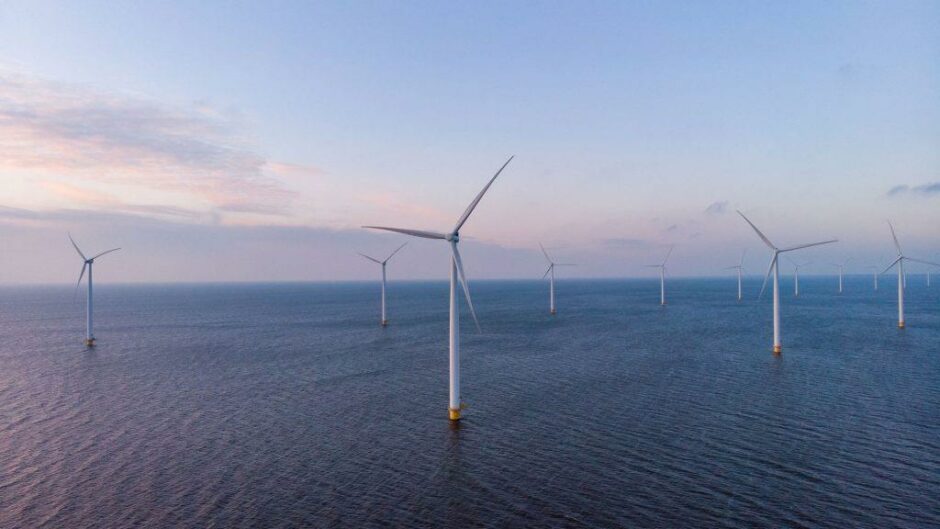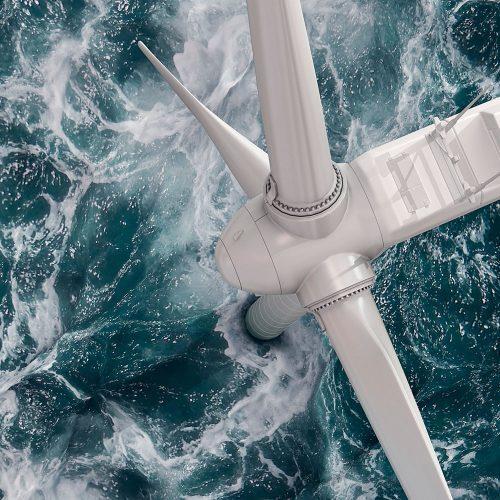
BP’s “long-term” commitment to Scotland is a key selling point for the company and its partner EnBW in winning ScotWind acreage, according to the bid’s top boss.
Anya Hoff, BP offshore wind growth vice president, said ScotWind will be a “test” of the energy transition, specifically around re-skilling a talented oil and gas workforce for new energy.
Ms Hoff said BP wants to use Scotland, where it has been in oil and gas for 50 years, as a “platform for the just transition in practice,” adding that the company is “keen to make sure we can be present in the region for the next 50 years and longer”.
“I think the unique differentiator with BP is we are here for the long term. We are not looking to start divesting or selling down or changing hands,” she said.
“We want to play in this sector long-term. We see ourselves as a long-term developer and operator of the offshore wind farms and we want to bring the industry with us, including human resources on the ground.”
The oil and gas giant, described by chief executive Bernard Looney as a company which is “greening”, has put together an impressive package should it and EnBW be successful.
Within an overall £10billion of identified investments, BP plans to create a global offshore wind centre of excellence in Aberdeen, vastly expand BP’s electric vehicle charging network, invest in hydrogen infrastructure and Scottish ports.
The pair are investing in an energy transition skills academy in Aberdeen, led by consultancy Xodus, and have also launched a supplier portal, attracting around 600 companies so far according to Ms Hoff, dedicated to its 2.9 gigawatt ScotWind tender.
Overall, the investments would support “thousands of jobs in the Scottish energy sector and supply chain, and develop new energy transition jobs, skills and capabilities,” according to BP.
Ms Hoff said: “We are actively working through the local supply chain to understand how we can utilise the Scottish supply chain in the development of a Scottish offshore wind project.”
It is one of several bids being made with relatively huge promises – commentators have noted that there is seemingly nothing that companies won’t do for the Scottish supply chain, which has had a false dawn before on offshore wind, with jobs going overseas.
The importance of following through was not lost on Ms Hoff, who said industry must work together to deliver.
“I think it’s a combination of the government and industry commitments. It’s impossible to go just with one. It has to be a mechanism of making sure both sides are making their best efforts to make this happen.
“It’s a combination of what’s expected from the regulator, the government and then also for the industry to collaborate. Because I think collaboration will also be required in all phases of offshore wind development and operations and also standing behind their commitments.”
In terms of the energy transition, Ms Hoff believes BP is going “further in Scotland” than it did in its successful £900million tender for lease space in the Irish Sea nearly a year ago.
The Crown Estate round 4 awards in February revealed that the pair had eclipsed rivals with their eye-watering tender for Irish Sea acreage, and there has since been a greatly increased spending cap placed on bids for the highly-anticipated for the counterpart ScotWind auction.

However, beyond just a cash sum, Ms Hoff said the potential to convert Scotland into a “global offshore wind leader” is the jewel in their crown.
“We think that creating this new business will help us to bring the workforce we have within the company and grow it further to accelerate Scotland’s energy transition and participate in the offshore wind sector in Scotland.
“Longer-term it’s about how we can use it beyond Scotland, including in the broader UK context but also internationally because we are proud of the Scottish supply chain and we think there is a lot of value that can be brought by utilising it internationally.
“We also want to open an operations and maintenance centre of excellence in Aberdeen where we want to place our, essentially, O&M brain to operate our portfolio of offshore wind projects globally.”
ScotWind, BP and New Energies
Where some excitement lies in the coming years is the potential for oil and gas platforms to be electrified via power from shore or via new offshore wind projects.
Crown Estate Scotland and Marine Scotland are planning a ScotWind-style offshore leasing round specifically for wind project acreage near to upstream assets in order to make that a reality.
Does that mean that the timing isn’t quite right for the current ScotWind round to facilitate electrification for oil platforms, like those owned by BP? Not necessarily.
Ms Hoff said: “We have looked at it. I think what we have concluded is that it is an option which might be explored further and some of the sites might create a base for electrifying upstream assets. The grid connection costs might be prohibitive in some cases.
“I know that the Scottish Government is planning to launch a tender which will allocate seabed which is closer to oil and gas assets, which might be cheaper in terms of grid connection cable costs.
“So I don’t think ScotWind is necessarily a no-go in terms of electrifying upstream oil and gas assets, but I would say there are multiple options there and there is a lot of complexity associated with it as well in terms of providing for intermittency which oil and gas cannot currently accommodate to a large degree. So it needs to have a backup baseload coming from shore, for example, in addition to offshore wind energy production.”
Another up-and-coming technology for the North Sea is carbon capture, utilisation and storage (CCUS), which BP has a firm hand in with the East Coast Cluster.
The project was selected for government funding in October, and will be one of the first CCUS projects to get up and running in the UK.
However, with the development of this burgeoning industry, there has been some public clashes around CCUS having to compete for space with offshore wind, as has been seen between the East Coast Cluster and the Orsted Hornsea 4 windfarm.
Although Ms Hoff declined to comment specifically on the Hornsea issue, she conceded that the competition for space is a problem that needs careful attention.
She said: “I think in the areas where there is a high potential for offshore wind and high potential for CCUS it needs to have a dedicated effort to make sure the seabed use is done thoughtfully to avoid conflicts between different businesses and make sure that the seabed use is done to the best advantage of the government and of the nation. Avoiding potential conflicts where the same seabed can be leased for multiple uses.
“That’s not unusual in terms of oil and gas as well. We see oil and gas neighbouring offshore wind projects and how do we accommodate oil and gas leases, exploration leases for example, which might be on the same seabed as offshore wind leases. It’s not unheard of.
“But I think with CCUS, because it’s a new business, it’s less established, it probably needs extra attention in terms of making sure the multiple uses of the same seabed is possible.”
Recommended for you


 © Supplied by bp
© Supplied by bp © PRESS AND JOURNAL
© PRESS AND JOURNAL